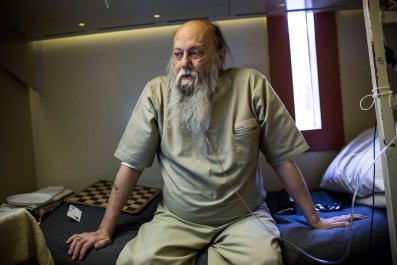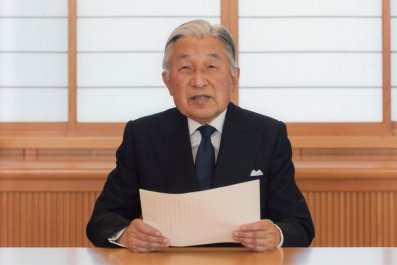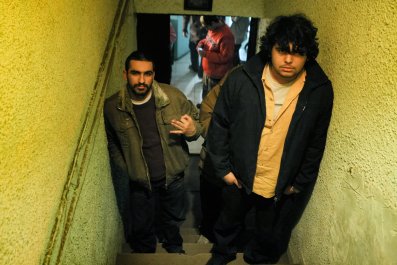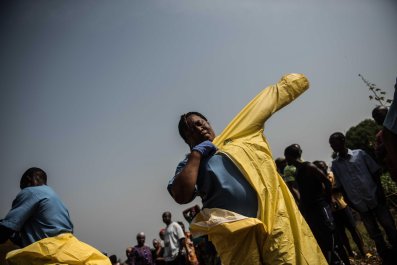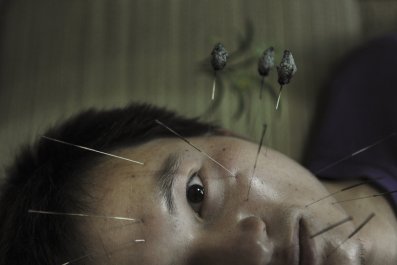The tally is relentlessly grim: a whole settlement wiped out in Trinity County "excepting a few children"; an Indian girl raped and left to die somewhere near Mendocino; as many as 50 killed at Goose Lake; and, two months later, as many as 257 murdered at Grouse Creek, scores of them women and children. There were the four white ranchers who tracked down a band of Yana to a cave, butchering 30. "In the cave with the meat were some Indian children," reported a chronicle published later. One of the whites "could not bear to kill these children with his 56-calibre Spencer rifle. 'It tore them up so bad.' So he did it with his 38-calibre Smith and Wesson revolver."
There have been books written about the systematic slaughter of California Indians, but none as gruesomely thorough as Benjamin Madley's An American Genocide, from which the above accounts come. He estimates that between 9,000 and 16,000 Indians, though probably many more, were killed by vigilantes, state militiamen and federal soldiers between 1846 and 1873, in what he calls an "organized destruction" of the state's largely peaceful indigenous peoples.
"I calculated the death toll using conservative estimates," Madley tells me. "I did not want to be accused of exaggeration." His book shows that the intent to rid California of its indigenous inhabitants was openly and repeatedly voiced, and that the means to achieve these ends were unambiguously brutal: mass deportations, slavery, massacres. He argues that what happened to California Indians was, according to the most widely accepted definition of genocide, not all that different from what happened to Jews, Armenians or Rwandans.
The debate over genocide in Native American history often turns to California, where the Native American population fell dramatically, from about 150,000 to 30,000, in the middle decades of the 19th century. It has since rebounded, so that California has the largest Native population in the United States today, with about 723,000 Indians, including many who belong to the state's 110 federally recognized tribes. The state is a microcosm of Indian country—and it is there, many believe, that Manifest Destiny culminated in the only way possible, with historians Robert Hine and John Faragher calling it "the clearest case of genocide in the history of the American frontier."
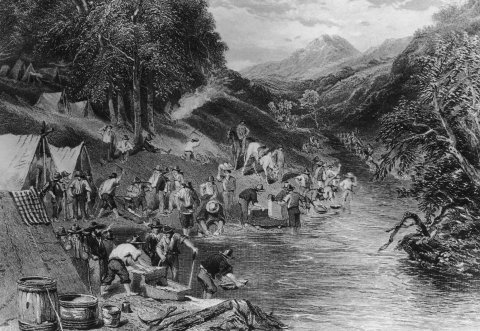
Where'd They All Go?
A neatly dressed 44-year-old, Madley looks less like a genocide scholar than a promising "Silicon Beach" junior executive. As we eat dinner at a crowded Santa Monica steakhouse, we might pass for two members of the local tech scene, though the waitress who brings our victuals catches alarming bits of conversation about massacres and mass graves that suggest we are not working on a data compression algorithm.
I first met Madley, a professor of history at the University of California, Los Angeles, on a warm spring day on the grounds of University High School in West Los Angeles, which is also a sacred site for the Tongva people, native to this region; their sacred springs sit on the UHS grounds, fenced off. The main spring remains active, and though I was told by my guide that pollutants have dirtied the water, this did nothing to disturb the surreally peaceful mood of the place. That was broken, however, by frequent sounds that very much resembled gunshots: A school track meet was taking place on the other side of the chain-link fence.
Today, the plain one-story building on the Kuruvungna Springs grounds functions as a museum and community center; 20 years ago, it was a classroom, and a significantly younger Ben Madley took German classes there. Back then, the UHS mascot was an Indian, adorned as such mascots often are, with a war bonnet. Madley had grown up around Indians—his father had been a psychotherapist on the California-Oregon border, working with the Karuk people there—so he knew that California Indians did not wear war bonnets, that these were the regalia of Plains tribes. He also knew that the spring, then overgrown, bore some significance to the people who had been there before, the people who were ostensibly memorialized by the school's mascot. He tells me, "I started to wonder, 'Where are all the Indian people?'"

As an undergraduate at Yale, he studied the slaughter of Tasmanian Aborigines by British colonists in Australia. Returning to New Haven as a graduate student years later—after forays into venture capital, online philanthropy, fish farming and, briefly, selling industrial equipment to the Japanese—he turned his focus to his native state. In the morning, he would walk through the Woolsey Hall rotunda, with its tally of Yale men who'd died in conflicts throughout American history.
"I need to have something like that for California Indians," Madley decided.
He spent the next decade trying to compile a record of every single act of deadly violence perpetrated against the Native American people of California during the Gold Rush and its aftermath. Although the resources were scattered, they were plainly available in state and federal archives, as well as in university libraries from Berkeley, California, to Hanover, New Hampshire. There was no attempt to conceal what was done to the Indians in California. "A massacre, a lynching or a whole killing campaign—these things were hidden in plain sight."
Madley found the murderers acted under the sanction of state and federal government. Feelings of racial superiority were deployed to justify the killing; greed supplied the sense of urgency. California's statehood, in 1850, came two years after the discovery of gold. This was also the decade when the slaughter reached its apogee. Three hundred thousand came seeking gold. It happened that many of the goldfields in Northern California lay in the ancestral lands of tribes like the Karuk, the Wintu and the Miwok—all of which remain in California, diminished survivors of an unwholesome past.
It was a widely held belief in 19th-century California that all of the Indians had to be exterminated. Reported the Daily Alta California, "Whites are becoming impressed with the belief that it will be absolutely necessary to exterminate the savages before they can labor much longer in the mines with security."
The killing of Indians was performed for reasons that seem, today, pathetically feeble. Madley describes how one vigilante gang, called the California Blades, set about destroying Nisenan villages over several missing mules.
The United States Army often participated in the mass killing, making Capitol Hill complicit in what was happening in the goldfields of the Sierra Nevada and elsewhere in California. In the winter of 1849, Indians wanting freedom killed Andrew Kelsey and Charles Stone, two slavers in what is today Lake County. In revenge, federal infantry and cavalry detachments attacked a village at Clear Lake. On May 15, 1850, they "poured in destructive fire indiscriminately upon men, women and children," according to one account. As many as 800 members of the Pomo tribe were killed at what has come to be known as Bloody Island. "It took them four or five days to gather up the dead," one survivor remembered.
A village of Yokayas on the Russian River was attacked by U.S. troops just days later, in what their commander deemed "a perfect slaughter pen." Yokaya casualties may have been as high as 100. The U.S. troops lost no men, though two suffered wounds.
Much of the slaughter was carried out by state militias, which enjoyed financial support from both Sacramento and Washington, D.C. In Round Valley, north of San Francisco, the Eel River Rangers were so prolific in their murder of the Yuki that even some white observers became alarmed. "The killing of Indians is a daily occurrence," reported California's head of Indian affairs. "If some means be not speedily devised, by which the unauthorized expeditions that are constantly out in search of them can be restrained, they will soon be exterminated."
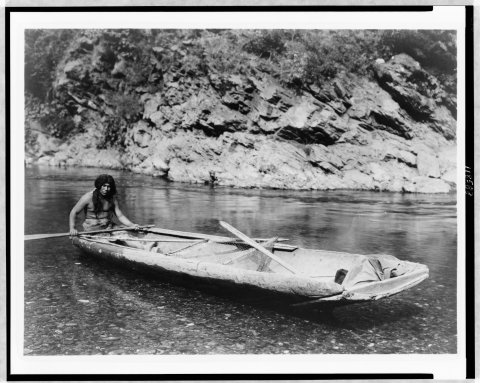
One of the killers sent a bill to California: $11,143. The state paid it nearly in full. Madley notes that of the $1.5 million that California spent on 24 different Indian-killing militia campaigns between 1850 and 1861, Congress paid the state back all but $200,000.
Others have described some of these campaigns, but never in such strong terms and with so much blame placed directly on the United States government. Detractors of the Indian genocide version of history tend to portray historians like Madley as left-wing revisionists informed more by guilt than fact. The foremost of these critics is Gary Clayton Anderson, a professor at the University of Oklahoma. Anderson insists that what happened to Native Americans during colonization was ethnic cleansing, not genocide. "If we get to the point where the mass murder of 50 Indians in California is considered genocide, then genocide has no more meaning," he says. Anderson tells me that, by his estimate, no more than 2,000 Native Americans were killed in California.
"I have no idea where he got that number," Madley says.
I ask Madley if he was prepared to be branded "un-American" for suggesting the nation had committed atrocities on a par with Nazi Germany. Though he grasped that I was being intentionally provocative, he gave me a look split equally between astonishment and dismay. "What is un-American," he says, "is skewering babies on bayonets, using the butt of the rifle to bash their parents' heads apart and then shooting anybody who's still alive.
"That's what's un-American."
Another Final Solution
Around the time Madley was finishing his manuscript, in the fall of 2015, Pope Francis arrived in the United States. During his first stateside visit, the pope canonized Junípero Serra, the 18th-century Franciscan missionary from Spain responsible for the first nine of California's famous Catholic missions, of which 21 still stand. During the canonization, the pope praised Serra's devotion and evangelism while also noting that Serra "sought to defend the dignity of the native community, to protect it from those who had mistreated and abused it."
Three days later, Mission Carmel, where Serra is buried, was struck by vandals who apparently disagreed with the pope's generous assessment. They toppled a statue of the newly minted saint, splashed paint on walls and defaced surfaces with graffiti. "Saint of genocide," one scrawled message said.
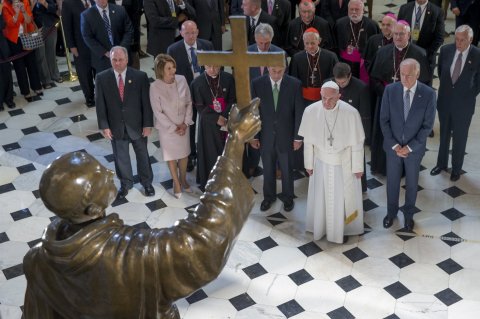
The Gold Rush and the years that followed may have marked the bloodiest period of white-Indian relations, but there was plenty of cruelty before—and after. The Mexicans ceded control of California to the United States in 1846, which is why Madley begins An American Genocide in that year. He ends it in 1873, with the Modoc War, which concluded with four Modoc leaders hanged and beheaded, their heads sent to the Army Medical Museum in Washington. After that, organized mass killings became less frequent.
But that hardly meant the suffering was over for Indians, in California and elsewhere in the United States. Reservations were established in the mid-19th century, and the conditions there were so brutal, Adolf Hitler is said to have used them in part as a blueprint for his Final Solution. On the Round Valley Reservation, Native Americans were getting only between 160 and 390 calories a day from federal officials, as part of what Madley calls "institutionalized starvation conditions." Eighty years later, the daily ration for prisoners at Auschwitz was 1,300 calories.
The Sugar-Cube Missions
When my wife was a young girl, she, her mother and grandmother toured the California missions, the very ones founded by Serra and his fellow missionaries. Like just about every fourth-grader in the California public school system, she also built a model mission out of sugar cubes, during a standard curriculum unit on California history. The state's practice is to portray the missions as quaint symbols of a benign institution that marked the true beginning of California, which is to say the beginning of white California.
Almost everyone I spoke to for this story mentioned the sugar cube missions, for they reveal much about how we teach American history, sweetening depredations until the bitterness is gone. Of course, there is a limit to how much depravity a 9-year-old can grasp. Which may be the point. Consigning the history of California Indians to the fourth grade is a convenient means of forgetting it. And yet the same state that now teaches the Armenian genocide and, earlier this year, amended history textbooks after complaints from some South Asians is hesitant to look deeply into its own history.
My wife went to a middle school in Sacramento named after John Sutter, the celebrated Swiss colonist who was also an Indian slaver. Nearby is a middle school named after Kit Carson, who served as a scout for John C. Frémont and participated in some of Frémont's most notorious massacres. Frémont's name is all over California: a street in San Francisco, a city in the Bay Area. Countless place-names in California include the word squaw, an obscene term for Native American women. The most famous of these is the ski resort at Squaw Valley, near Lake Tahoe, but there is also Squaw Creek, Squaw Canyon and many others.
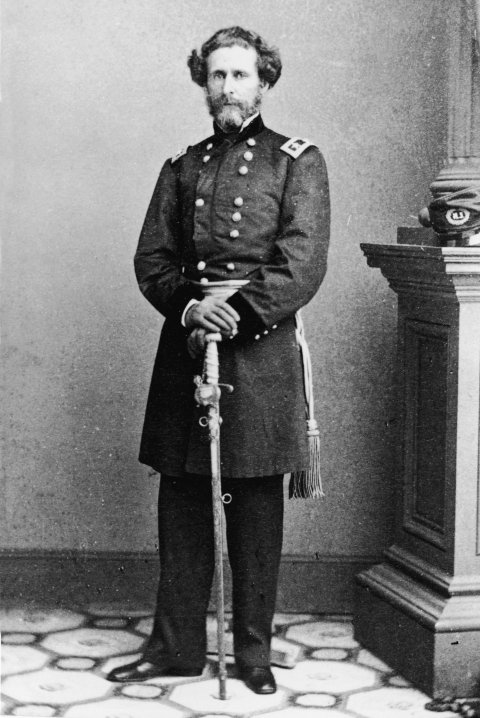
Another derogatory term for California Indians, digger, is attached to the Pinus sabiniana tree, commonly known as the "digger pine." Last year, Governor Jerry Brown signed a bill that prevented public schools from using Redskins as a team name or mascot. That step is laudable but slight, especially in a nationwide context: A 2014 analysis by the polling site FiveThirtyEight found more than 2,100 sports teams in the United States using Indian team names like Redmen and Warriors. Plenty of such teams still play in the Golden State.
Madley concludes An American Genocide with a discussion of place-names, which he says raise "awkward questions." If we spurn the name of Robert E. Lee, why do we accept that of John C. Frémont? Don't red lives matter as much as black ones? "If we call it genocide, then something has to be done," he says. "We have to speak about it, we need to remember it, we need to memorialize it. And we need to teach it."
Presumably, this would be a lesson without sugar cubes.
The Ravages
On a hot spring afternoon, I drove south from the Bay Area, past the office parks of Silicon Valley, into an inland golden country untouched by ocean breezes. Less than an hour's drive south of San Jose, the Hollister Hills felt somehow primeval, raw. The roads got thinner and more sinuous, until I was on a dusty one-lane path winding past a vineyard, fearing I'd missed my turnoff for Indian Canyon.
It makes sense that Indian Canyon would be so remote: It was even more so when Cienega Road was a swamp, not just a thoroughfare named for one. This is where the Costanoan/Ohlone people escaped from the nearby Mission San Juan Bautista, knowing that whites would not pursue them into the hilly wilderness. Indian Canyon thus became a long-standing sanctuary from the ravages of colonialism.
Today, Indian Canyon remains in Indian hands: Though it is not a reservation, it is a federally recognized tribal land, which gives it some of the same sovereignty. It is run as a sort of spiritual retreat by Ann Marie Sayers, an energetic woman with a penchant for fragrant Benson & Hedges cigarettes. Sayers grew up here, on land her predecessors reclaimed from the federal government. After living in Southern California, she returned to Indian Canyon and further expanded its land holdings by adeptly citing historical claims. Today, she lives with her daughter and several dogs of varying ferocity on 300 minimally tamed square acres. Poison oak grows with alarming fecundity.
Sayers took me on a tour of Indian Canyon, a gash in the mountains about a mile long. Wilderness hemmed us in, threatening to close up this little stream of civilization. In glades, there were sweat lodges and gathering places: Tribes often come here to perform ceremonies they can't host elsewhere. Recently, a holocaust ceremony had been held; Indian Canyon also hosts a run from Mission San Juan Bautista, to honor the path ancestors took to freedom.
As we walked the grounds, Sayers picked leaves of poison oak, utterly unafraid of its infamous effects. She could always rub a little mugwort, if need be. Her one-with-earth attitude, part Ohlone and part Beverly Hills, reminded me that much of the green thinking popular today reworks Native American attitudes about the land, its sanctity and its wisdom. The farm-to-table movement is, in part, a repudiation of Big Agra and a return to the kind of season- and climate-aware cooking that Native Americans prized long before the culinary wizards of New York and San Francisco put raw kale on a plate. Holistic medicine has its roots in Eastern practices but also Native ones. Perhaps instead of merely celebrating Native Americans we can finally learn from them.

Then I drove home, through the town of Hollister, which was once Mutsun Ohlone land, and past Fremont, the Bay Area city named for the famed Indian killer. Then Oakland, which has a health center dedicated to Natives, and Berkeley, where the famous university's Hearst Gymnasium pool has been thought to be haunted because of the 12,000 Native remains stored beneath it. Recent construction in West Berkeley, on the waterfront, unearthed an Ohlone burial site, a reminder that there were people here before the whites came and decided that these golden hills, and this sparkling bay, were going to be the last and greatest acquisition of their empire.
Those people, the Indians, survive in part as place-names: Yosemite National Park, Mojave Desert, Ohlone Greenway. But so do the people who brought about their destruction: Frémont, Carson, Sutter.
The blood has dried. The battles continue.








